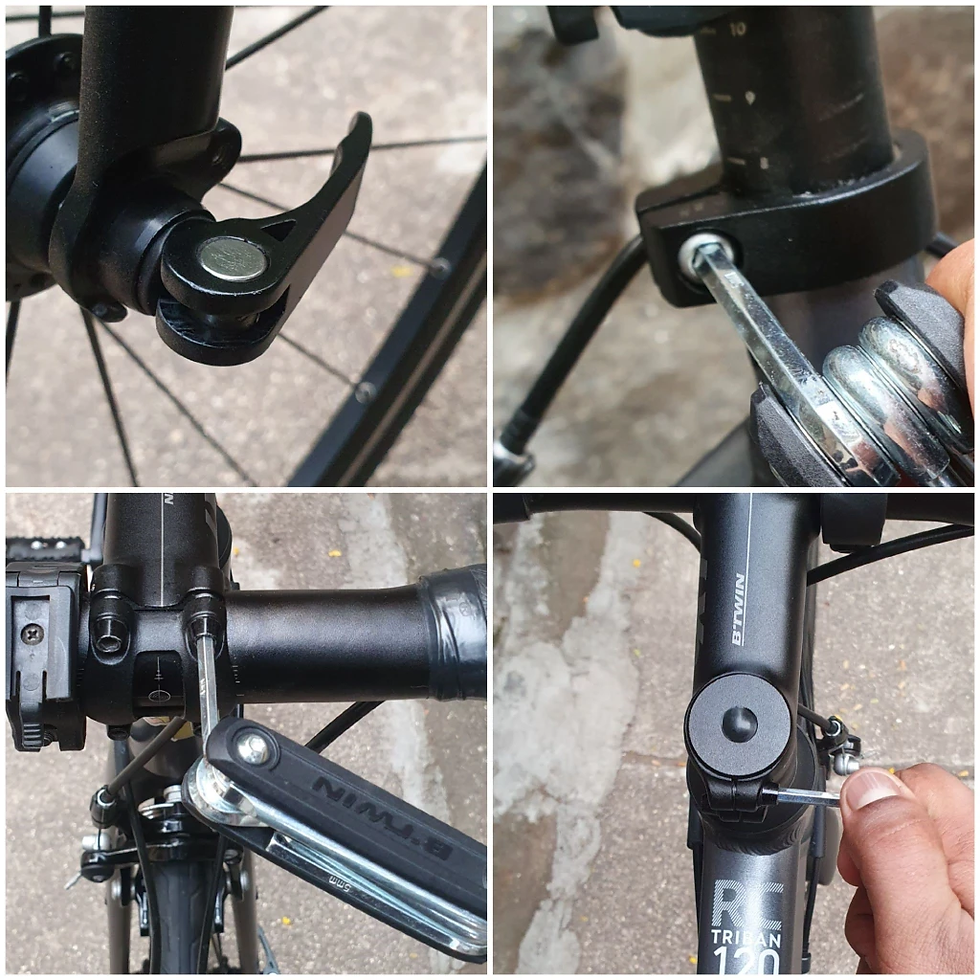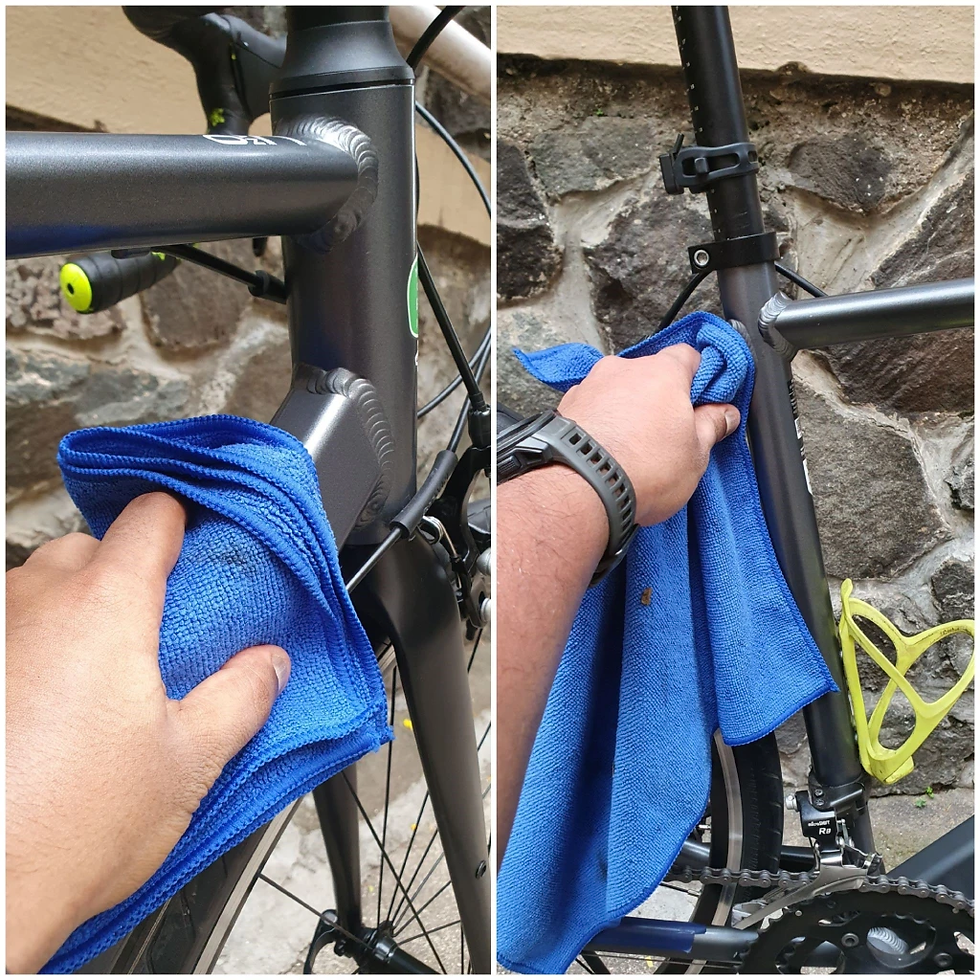Essential Pre-Ride Safety Checks
- Dishanth Kembhavi
- Mar 12, 2022
- 3 min read
Updated: Aug 16, 2023
Have you had your brakes fail or your tire lose air pressure mid-ride? Ever felt the inconvenience of looking down at a buckled wheel while you’re pedalling away? Do you hear the sounds of rattling and clanking on your drivetrain? Pre-ride safety checks will enable you to not only understand your bicycle better but also avoid any future problems from occurring. As your riding frequency increases, it is imperative that you must perform periodic checks on your bicycle. Even though you may not be a professional rider or mechanic, these checkpoints will help you prevent those annoyances by performing a thorough and comprehensive check on your bicycle before you head out on a ride.
1. Tire Pressure
Maintaining your tire pressure is one aspect of bicycle maintenance that is often overlooked. Air pressure fluctuates over time depending on a few external factors like terrain and weather conditions. Every tire has a recommended air pressure (in psi or bar)etched on its side wall. It is usually written in a range, for e.g. ‘90 to 115 psi’. Additionally, keeping a check on your tire pressure can prevent any untoward situations like punctures or blow-outs. Floor pumps with a pressure gauge are a necessary tool to keep a stringent check on your tire pressure. Meanwhile, for your intra-ride needs, check out these portable pumps.

2. Brake check
Performing a brake check is the most essential part of your pre-ride routine. Encountering dysfunctional brakes during your ride could lead to a serious accident. To ensure your brakes are functioning properly, first, spin the wheels and apply the brakes to check the stopping power and if they are rubbing against the spinning wheel. Then, press both levers to check the lever tension and if they reach the handlebar. Ideally, a one-and-half or two-finger space should be maintained between the brake lever and the handlebar. Inspecting for brake pad wear is necessary, especially if they’re used significantly based on riding frequency. Brake pads are marked with wear lines that warn the rider if the pads need to be replaced.

3. Drivetrain
Like every machine, a bicycle’s drivetrain goes through excessive wear and tear. The causes of an ineffective drivetrain include no chain lubrication, excessive dirt, grime and gunk, misadjusted gears and rust formation. It is imperative that a rider must perform a comprehensive checkup of any foreign objects present and ensure cleaning and degrease the drivetrain for its longevity. Additionally, shifting your gears beforehand on your front and rear derailleur will help you identify any gear skips, squeaks and creaks that may occur.

4. Quick release and bolts
Another reason for random squeaks and creaks you may hear on your ride could be due to a loose Quick-Release (QR) Lever or loose bolts in your handlebar or stem. Ensure that you tighten the QR lever and bolts adequately well before your ride by using a multi-tool or a set of Allen keys. A loose QR lever could lead to a loosely fit wheel. Hold your wheel tight and shake it sideways to make sure you don’t encounter any wheelplay. Seized bolts are caused due to rust and over-tightened bolts. When tightening a bolt, do not exert excessive force on the Allen key. Important bolts on your headset and saddle clamp should not be overlooked.

5. Crank-arm and pedals
Typical crank arm problems are noises caused by getting themselves loose and causing squeaks and creaks, eventually dismantling themselves.
Similarly, pedals – if not tightened properly when first installed, they could come undone.

So, before you ride, hold both pedals and then shake the bike sideways to feel for any play or wobble in the crank arms and pedals. Additionally, for your headset, hold the front brake down and gently wobble the bike back and forth and inspect for any noise or play in the headset.
Worthy mentions
Although the above 5 points are the most essential pre-ride checks, it is recommended to further check your bike for cracks and dents that may harm the structural integrity of the frame or fork, especially when riding on rough terrain. Moreover, washing your bicycle may be time-consuming. If your bicycle is dirty from the previous ride, give it a nice wipe-down using a dry or slightly damp cloth to get all the dirt and grime out of the nooks and crannies.

Spending time getting to know your bicycle by doing frequent pre- and post-ride inspections will help you identify problems quicker and solve them effortlessly. The more you understand your own bike, the less time and money you will spend at the local bike shop for small problems. Leave your visits to the bike shop for the complicated stuff that requires a much more technical and professional pair of hands.
If you have any suggestions or recommendations for a pre- or post-ride safety check, please leave a comment in the section below.


